The current in a conductor and the potential difference across its ends are measured by an ammeter and a voltmeter.The meters draw negligible current.The ammeter is accurate but the vlotmeter has a zero error(that is ,it does not read zero when no potential difference is applied).Calculate the zero error if the readings for two different conditions are 1.75A, 14.4Vand 2.75a, 22.4V.Solution in Tamil
Let the voltmeter reading when the
voltmeter has zero error be V
((l1)Rl2R)=(V1V2)
⇒(1.752.75)=(14.4−V22.4−V)
⇒(0.350.55)=(14.4−V22.4−V)
711=(14.4−V22.4−V)
⇒7×(22.4−V)=11(14.4−V)
⇒156.8−7V=158.4−11V
⇒(7−11)V=156.8−158.4
⇒−4V=−1.6
⇒V=0.4V .
Topper's Solved these Questions
- ELECTRIC CURRENT IN CONDUCTORSBOOK - HC VERMACHAPTER - ELECTRIC CURRENT IN CONDUCTORSEXERCISE - objective 2
9 Videos
- DISPERSION AND SPECTRABOOK - HC VERMACHAPTER - DISPERSION AND SPECTRAEXERCISE - Exercises
11 Videos
- ELECTRIC CURRENT THROUGH GASESBOOK - HC VERMACHAPTER - ELECTRIC CURRENT THROUGH GASESEXERCISE - Exercise
23 Videos
Similar Questions
Electrons are emitted by a hot filament and are accelerated by an electric field as shown in figure .The two stops at the left ensure that the electron beam has a uniform cross-section.

View SolutionA flint glass prism and a crown glass prism are to be combined in such a way that the deviation of the mean ray is zero. The refractive index of flint and crown glasses for the mean ray are 1.620 and 1.518 respectively. If the refracting angle of the flint prism is 6.0∘, what would be the refracting angle of the crown prism ?
View SolutionA discharge tube contains helium at a low pressure. A large potential difference is applied across the tube. Consider a helium atom that has just been ionized due to the detachment of an atomic electron. Find the ratio of the distance travelled by the free electron to that by the positive ion in a short time dt after the ionization.
View SolutionThe current flowing through a conductor and the potential difference across its two ends are as per reading of the ammeter and the voltmeter shown in (Fig. 3.50). Find the resistance of the conductor.
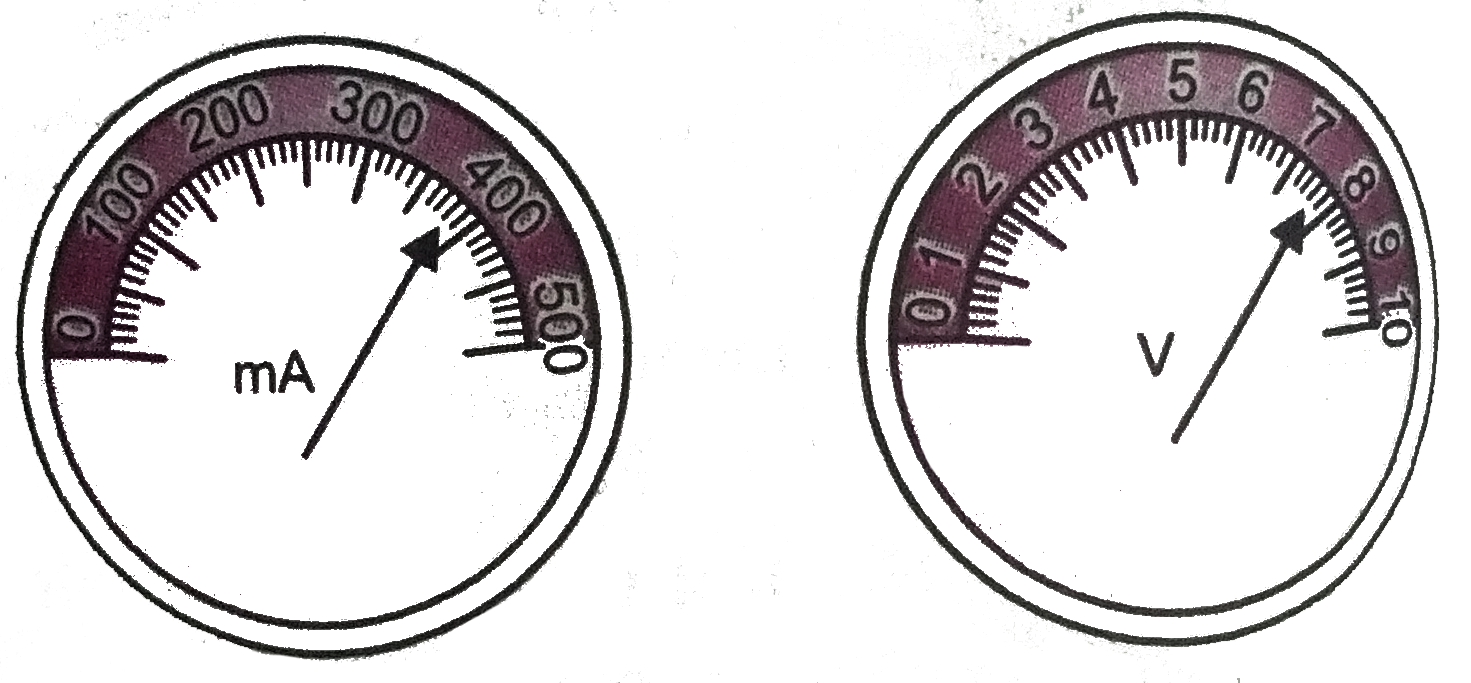 .
.
View SolutionThe potential difference across the 100Ω resistance in the following circuit is measured by a voltmeter of 900Ω resistance. The percentage error made in reading the potential difference is
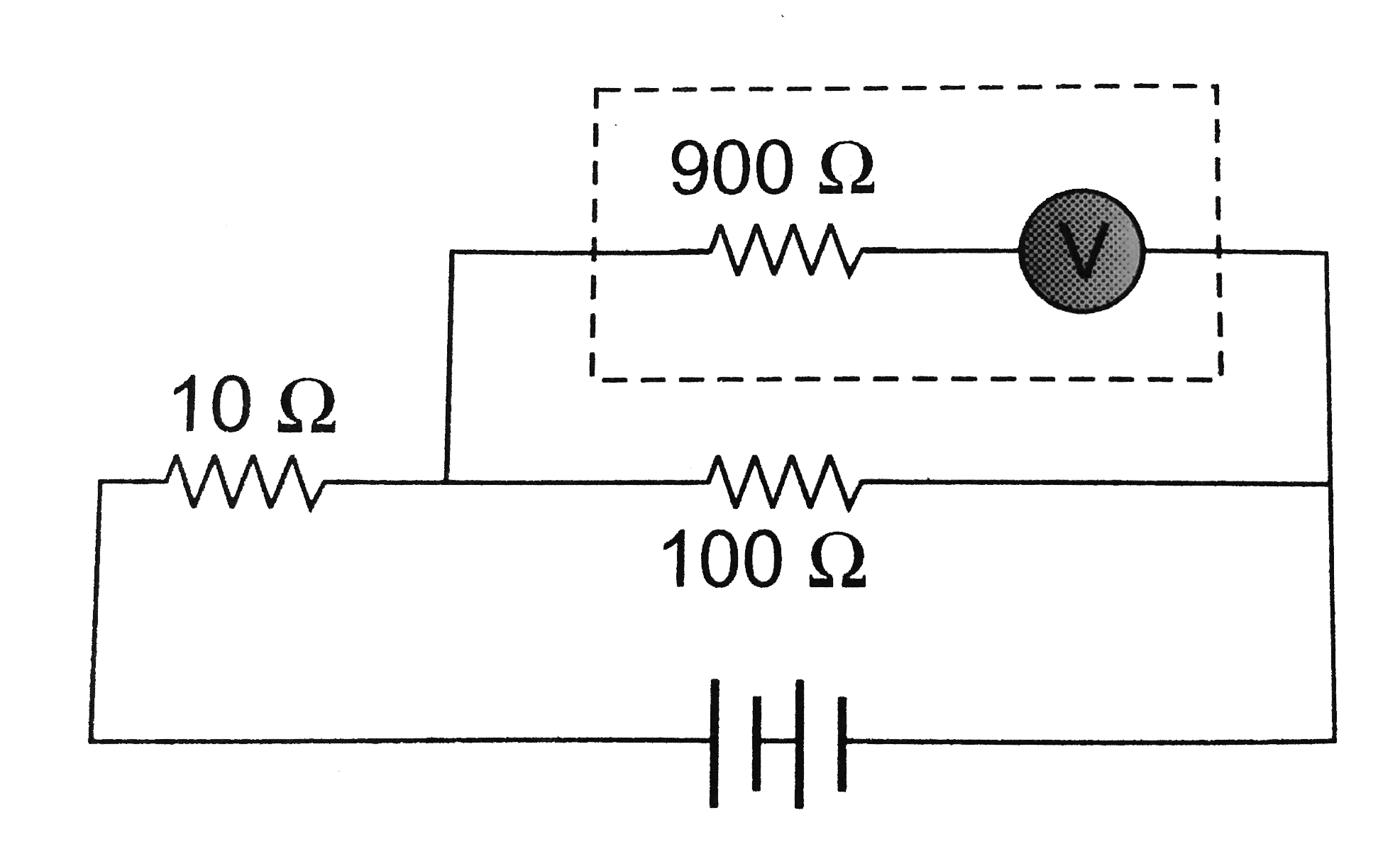
View SolutionWhen a potential difference is applied across the ends of a linear metallic conductor
View SolutionFour students recorded the readings of the current by observing the position of pointer on the ammeter scale given below :
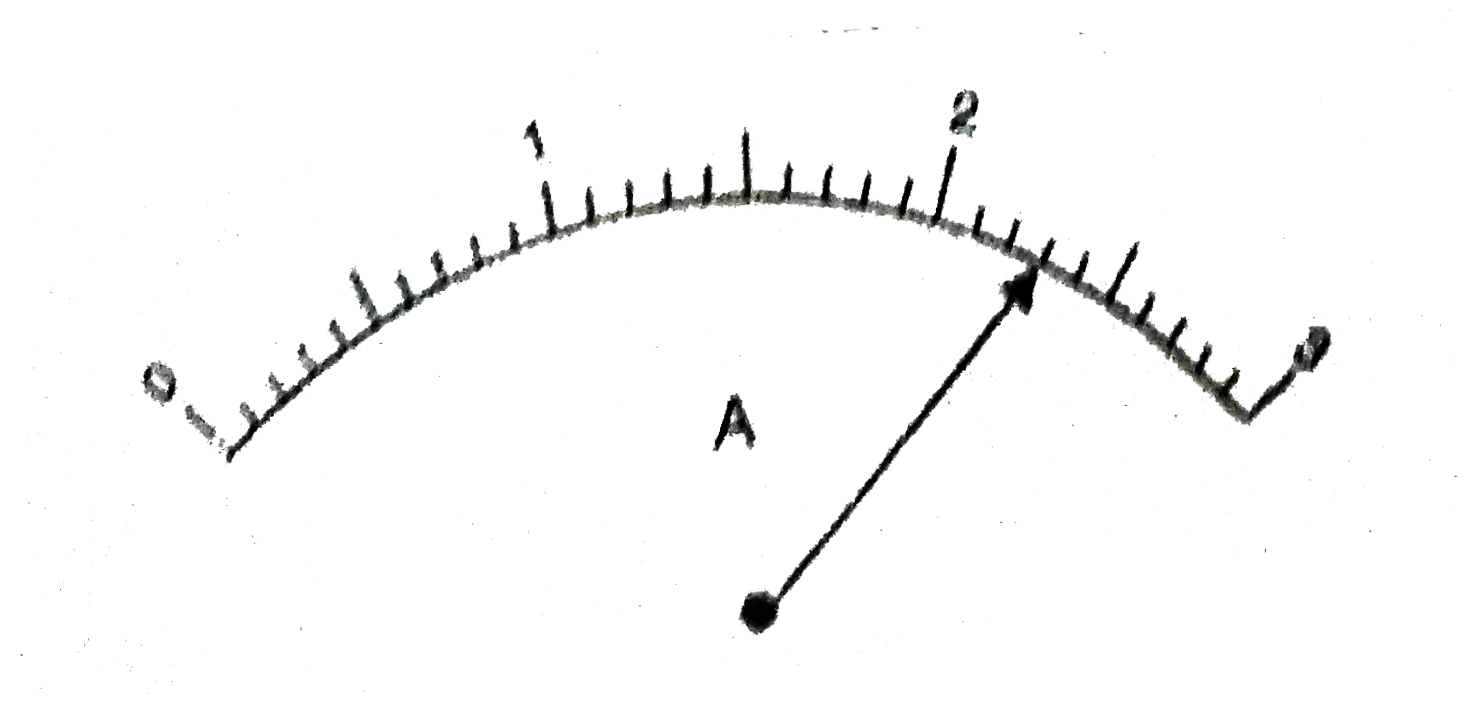
If there is no zero error, the correct reading of current is :
View SolutionFour students measured the reading by observing the position of pointer on the ammeter scale as shown below :
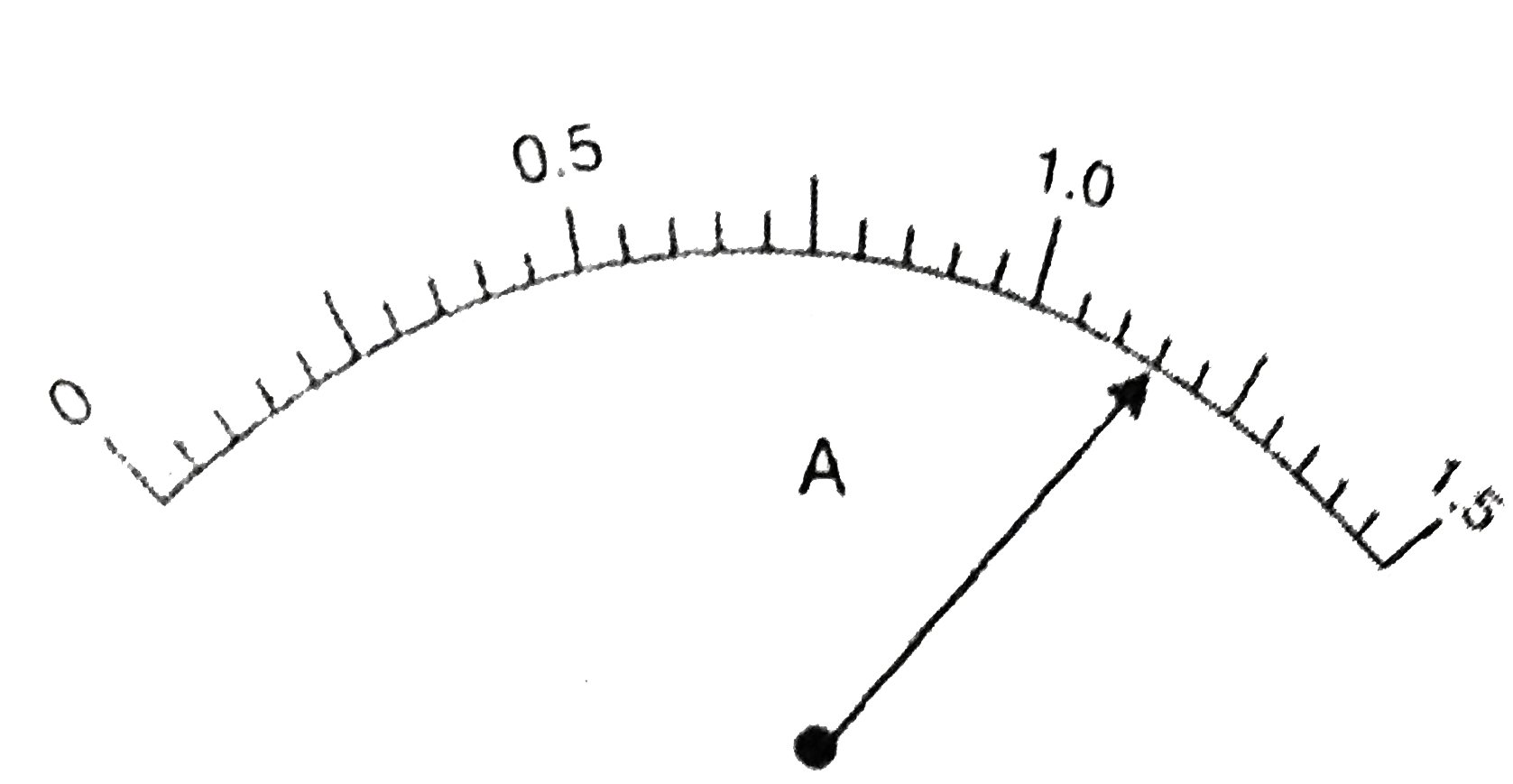
Assuming that the ammeter has no zero error, the correct reading is :
View SolutionThe reading of current flowing through a conductor and the potential difference its two end are shown in the ammeter and volmeter given below. What will be the value of resistance in it?
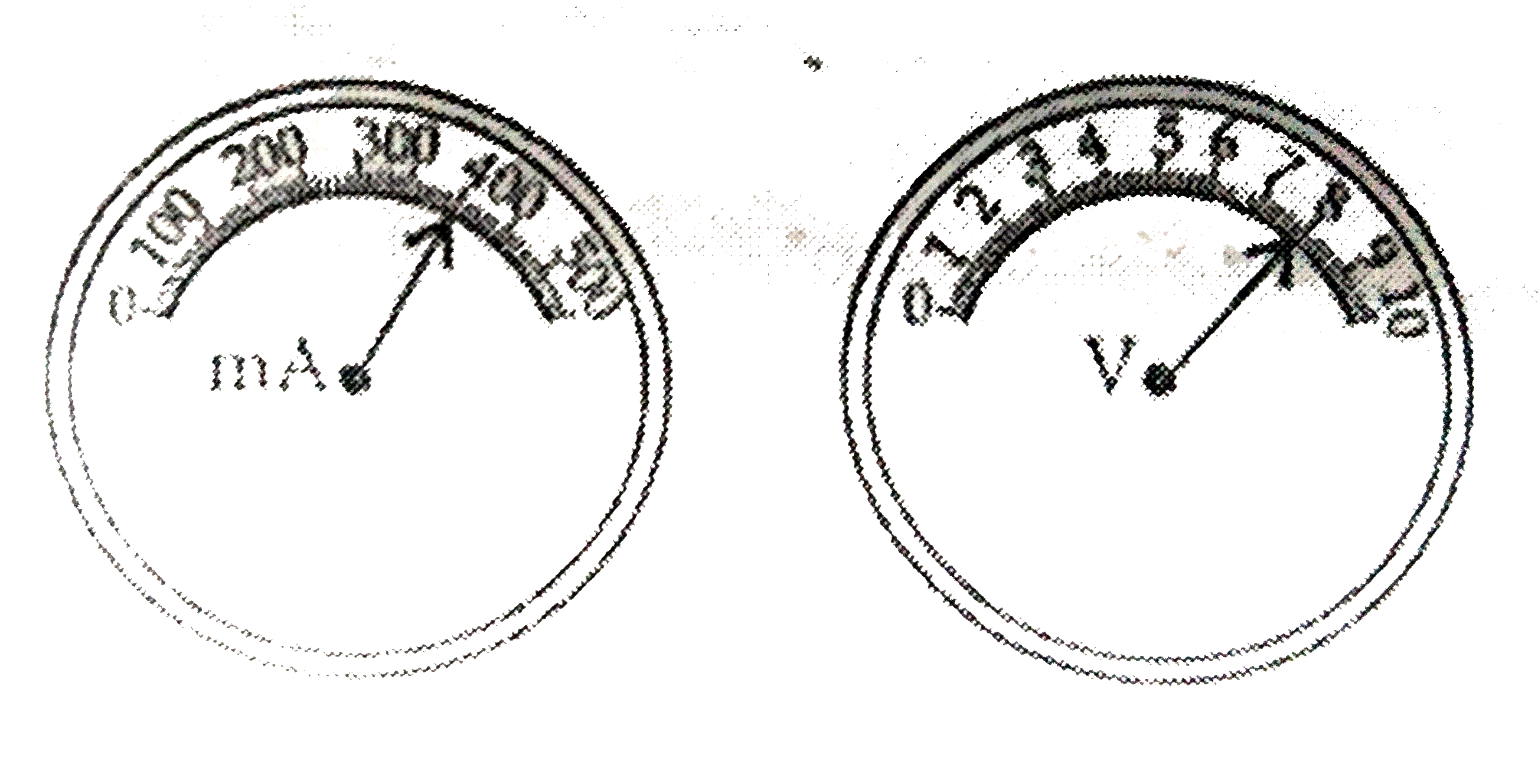
View SolutionIn an experiment , to study the dependence of potential difference (V) on the electric current (I) across a conductor (resistor), if the circuit is on for long time, then -select two correct options from the following: (i) Zero error of an ammeter will be changed. (ii) Zero error of a voltmeter will be changed . (iii) Value of a resistance will be changed. (iv) Resistor will be heated.
View SolutionThe reading of the ideal ammeter will be (Resistance of ideal ammeters is zero)
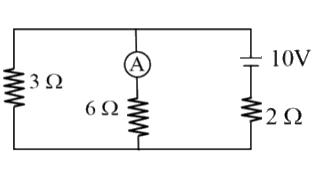
View SolutionThe reading of a constant potential difference are noted four times by a student. The student averages the zero error of the voltmeter . The average measurment of the potential difference is

View SolutionWhat happens when a potential difference is applied across the ends of a conductor?
View SolutionThe potential difference across the 100Ω resistance in the following circuit is measured by a voltmeter of 900Ω resistance. The percentage error made in reading the potential difference is

View SolutionRedraw the circuit, putting in an ammeter to measure the current through the resistors and a voltmeter to measure the potential difference across the 12Ω resistor. What would be the readings in the ammeter and the voltmeter?
View Solutionएक परिपथ में लगे ऐमीटर का माप 0.6A ऐम्पियर है। यदि परिपथ में लगे एक चालक का प्रतिरोध 12 ओम हो तो चालक के सिरों के बीच विभवांतर की गणना कीजिये।
View Solution
